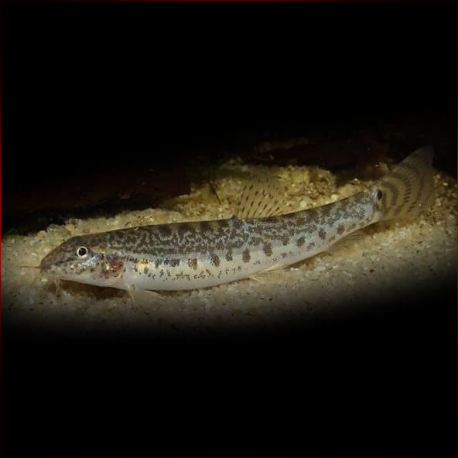More info
Datasheet
| Minimum Tank Size | 40 litres / 10.57 US gallons |
| Maximum Size | 5.0cm / 1.97inches |
| Temperature | 23°C / 73.40°F - 26°C / 78.80°F |
| Hardness | 1.01dgH / 18ppm - 10.03dgH / 179ppm |
| pH | 5.5-7.5 |
Behaviour:
Lepidocephalichthys spp. are peaceful fish, showing no aggression towards tankmates but may consume eggs or fry. They thrive in the company of their own species and do best when kept in groups of four or more individuals. For instance, L. furcatus can coexist well with fish that occupy the upper water column, such as Trichopodus, Trichogaster, Trichopsis, or certain Danio species. The presence of upper-dwelling fish can help reduce the timidity of L. furcatus, as these loaches interpret the absence of upper-level fish as a sign of impending danger. Additionally, it is advisable to house them with sand-dwelling loaches from compatible families, such as Botiidae, Cobitidae, and Nemacheilidae, after thorough research to prevent territorial issues or aggression.
Feeding and Diet:
These loaches are micropredators that sift through substrate, extracting insect larvae, small crustaceans, and similar prey. In captivity, they readily accept sinking dried foods but should also be provided with regular meals of small live and frozen foods like Daphnia, Artemia, and bloodworms to maintain their health.
Reproduction & Dimorphism:
Lepidocephalichthys Furcatus is presumed to be a seasonal spawner in the wild, but successful breeding in captivity has not been reported. Mature male L. Furcatus can be distinguished by enlarged pectoral fins with fused innermost rays, forming a structure known as the lamina circularis. In contrast, adult females are typically larger and heavier-bodied compared to males.
Habitat and Distribution:
These loaches are commonly found in shallow, slow-moving sections of streams, swamps, oxbows, backwaters, and paddy fields. Their habitats are typically heavily vegetated and contain soft mud or silt substrates. Lepidocephalichthys Furcatus is native to man-made lakes in Perak state, Malaysia, as well as regions in Thailand and Indonesia. They are adaptable to seasonal changes in water clarity and depth, and can survive in oxygen-depleted habitats by utilizing their intestine as a supplementary breathing organ.
Aquarium Setup:
To ensure the well-being of Lepidocephalichthys Furcatus, an aquarium setup should include a soft, sandy substrate to accommodate their burrowing behavior. Decorate the tank with water-worn rocks, driftwood branches, and tree roots to provide hiding spots and shaded areas. Moderate lighting is sufficient unless growing plants, and adding leaf litter enhances their natural environment. Since these fish prefer sluggish waters, high flow rates should be avoided, but some level of oxygenation is beneficial. Prevent small specimens from entering filter intakes and secure the tank lid as loaches may jump, especially when first introduced. See table for specific water condition requirements.

